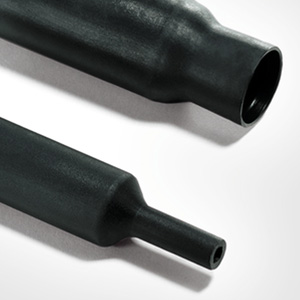 Heat shrink molding is a manufacturing technique that uses heat shrink tubing or films to encapsulate, protect, or insulate objects. The tubing, made from materials like polyolefin, PVC, or fluoropolymer, shrinks tightly around the object when exposed to heat. This process offers several benefits across various industries, particularly in electrical, automotive, and aerospace applications.
Heat shrink molding is a manufacturing technique that uses heat shrink tubing or films to encapsulate, protect, or insulate objects. The tubing, made from materials like polyolefin, PVC, or fluoropolymer, shrinks tightly around the object when exposed to heat. This process offers several benefits across various industries, particularly in electrical, automotive, and aerospace applications.
How Heat Shrink Molding Works
- Selection of Heat Shrink Tubing: Depending on the application, manufacturers choose tubing based on factors like material type, shrink ratio, and operating temperature range.
- Positioning the Tubing: The tubing is placed over the object (e.g., wire bundles, connectors, or joints) that needs to be protected or insulated.
- Application of Heat: Using tools like heat guns or ovens, heat is applied to the tubing, causing it to shrink and conform to the shape of the underlying object.
- Cooling and Solidification: Once the tubing has shrunk to the desired fit, the heat is removed, and the molded tubing cools and hardens, creating a durable, secure seal.
Advantages of Heat Shrink Molding
- Protection: Heat shrink provides protection against environmental factors like moisture, dust, and chemicals.
- Electrical Insulation: It offers excellent electrical insulation, which is crucial for safeguarding sensitive components.
- Enhanced Durability: The molded tubing adds mechanical strength, making it ideal for areas with high wear and tear.
- Customization: Available in various sizes, colors, and materials, heat shrink molding can be customized to meet specific needs.
Common Applications
- Cable Management: Heat shrink molding is used to organize and protect wire bundles, connectors, and splices in electrical systems.
- Sealing and Insulation: It’s commonly used to seal and insulate joints in automotive and marine industries.
- Environmental Protection: In aerospace, it helps shield components from extreme temperatures, vibrations, and contaminants.
This versatile technology is an essential tool in ensuring the longevity, safety, and performance of electrical and mechanical systems across a variety of industries.


